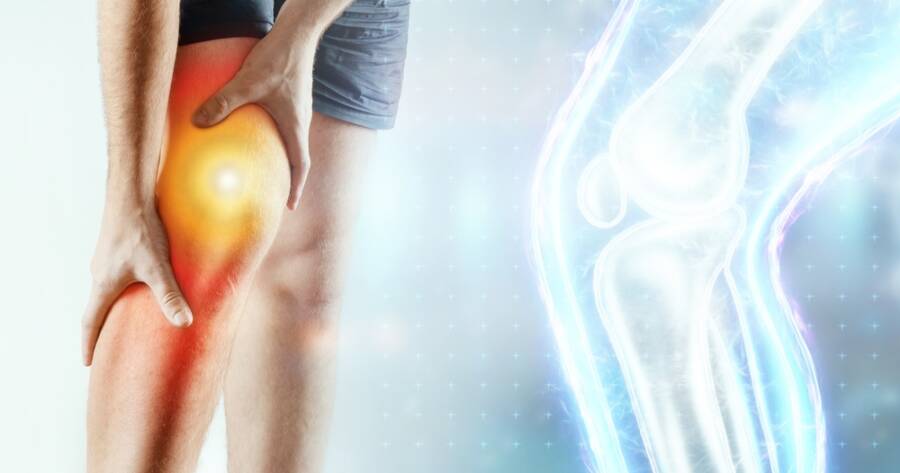Knee pain affects millions of people, regardless of age or activity level. Whether caused by injury, arthritis, or overuse, knee discomfort can significantly hinder daily activities and quality of life. Today, we’ll explore 10 treatments that may ease your knee pain.
1. Rest and Ice
One of the simplest yet most effective treatments for knee pain is to rest and apply ice to the affected area. Resting allows the knee to recover, especially if the pain is due to overuse or an injury.
Applying ice for 15-20 minutes several times a day can reduce inflammation and numb the area, providing immediate relief. This method is particularly effective in the first few days following an injury.1
2. Physical Therapy
Engaging in physical therapy is another highly effective treatment option for knee pain. A physical therapist can assess your condition and develop a personalized exercise program to strengthen the muscles around the knee, improve flexibility, and potentially enhance overall mobility. Regular sessions may even lead to significant improvements in knee function and pain reduction, making it a vital component of recovery.
3. Anti-Inflammatory Medications
Over-the-counter nonsteroidal anti-inflammatory drugs (NSAIDs), such as ibuprofen or naproxen, can provide temporary relief from knee pain. These medications are often used to reduce inflammation and alleviate pain. Always follow the recommended dosage and consult a healthcare professional if you have any concerns about long-term use or potential side effects.
4. Corticosteroid Injections
For more severe knee pain, corticosteroid injections may be recommended. These injections deliver a potent anti-inflammatory medication directly into the knee joint, providing quick relief from inflammation and pain. While effective, corticosteroid injections are typically not a long-term solution and should be used judiciously, as repeated use can lead to joint damage.
5. Knee Braces
Knee braces can offer significant support and stability for individuals suffering from knee pain. They help reduce strain on the joint, particularly during physical activities.2
There are various types of braces available, including sleeves for compression, hinged braces for additional support, and patellar straps to alleviate pressure on the kneecap. Consulting with a healthcare provider can help determine the best option for your specific condition.
6. Heat Therapy
Applying heat to the knee can help soothe stiffness and improve blood circulation. Heat therapy can be particularly beneficial for chronic pain or stiffness associated with arthritis.
Use a warm towel, heating pad, or take a warm bath to relax the muscles and increase flexibility. However, it’s essential to avoid using heat on swollen or inflamed areas, as it can exacerbate the condition.
7. Exercise and Weight Management
Regular low-impact exercise can play a crucial role in managing knee pain. Activities like swimming, cycling, and walking help strengthen the muscles around the knee while minimizing stress on the joint.
Maintaining a healthy weight can significantly reduce knee pain, as excess weight places additional strain on the joints. A combination of exercise and weight management can lead to lasting improvements in knee health.
8. Dietary Changes and Supplements
Certain dietary changes and supplements can also contribute to knee pain relief. Incorporating anti-inflammatory foods, such as fatty fish, nuts, fruits, and vegetables, can help reduce inflammation and pain.
Additionally, supplements like glucosamine and chondroitin sulfate may aid in cartilage repair and reduce symptoms of osteoarthritis. Always consult with a healthcare professional before starting any new supplements.
9. Alternative Therapies
Alternative therapies such as acupuncture, massage therapy, and chiropractic care have gained popularity for treating knee pain. These approaches may provide relief by addressing muscle tension, improving circulation, and promoting overall wellness. While individual experiences may vary, many people find these therapies effective in managing pain and enhancing mobility.
10. Surgical Options
If conservative treatments fail to provide relief, surgical options may be considered. Procedures such as arthroscopy, osteotomy, or knee replacement surgery can be effective in addressing severe knee pain caused by structural issues. Consulting with an orthopedic surgeon can help determine the best course of action based on the severity of your condition and your overall health.
Learn More Today!
Knee pain can significantly impact your quality of life, but various effective treatments are available to help you find relief. From simple home remedies like rest and ice to advanced medical interventions such as surgery, understanding your options empowers you to take control of your knee health.
It’s essential to consult with healthcare professionals to develop a personalized treatment plan that addresses your specific needs and goals. By exploring these top 10 effective treatments for knee pain, you can embark on a path toward recovery and reclaim the active lifestyle you desire.
